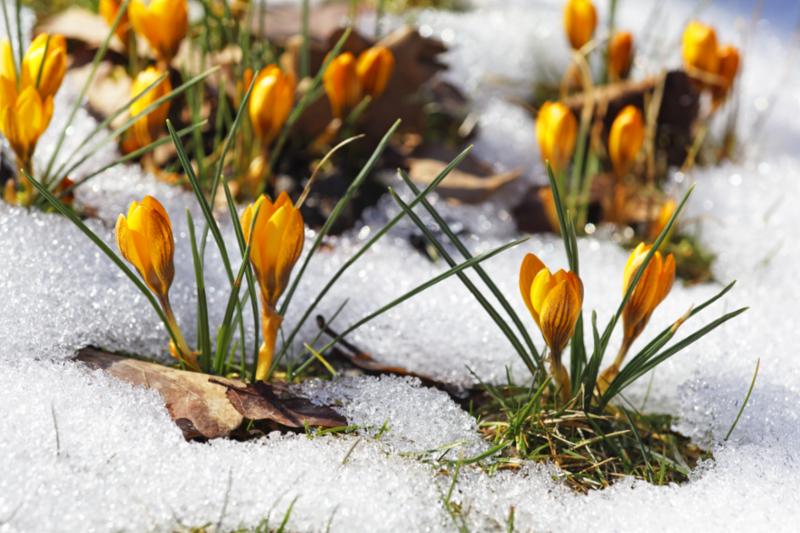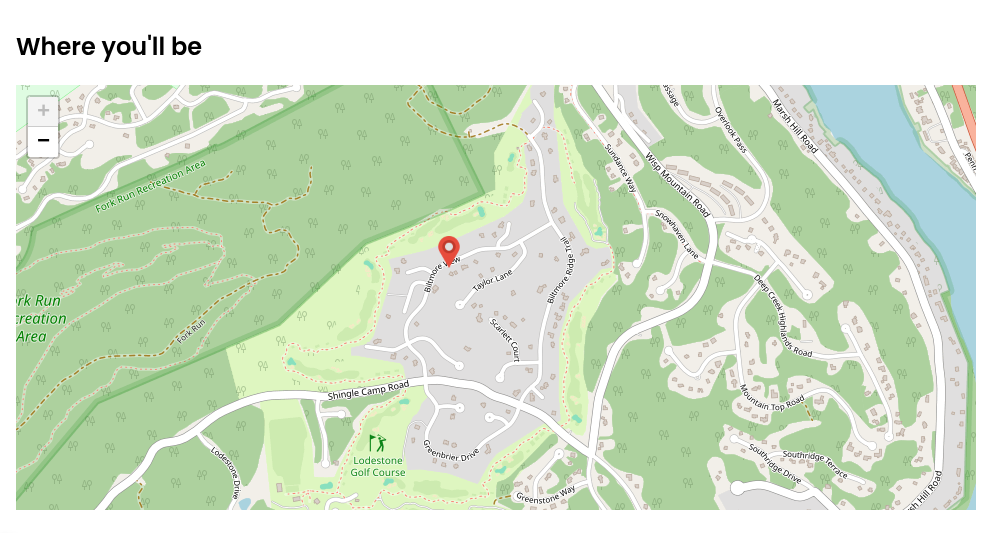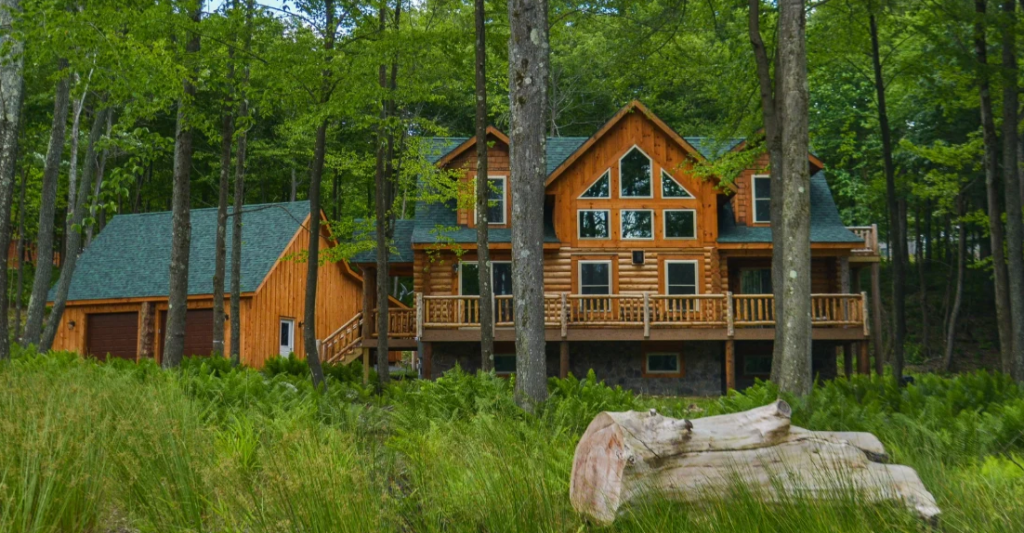31st-annual Women's Hall of Fame celebration held
DEEP CREEK LAKE — The 31st annual Women’s Hall of Fame celebration was held Saturday morning, April 12, at Ace’s Run Restaurant & Pub, Deep Creek Lake. The event honors Garrett County women who make a difference.
Sponsored by the Garrett County Commission for Women, it recognizes new inductees into the Garrett County Women’s Hall of Fame, gives Young Woman of Distinction Awards and presents scholarships.
“Today we honor nine deserving women for their significant contributions to the Garrett County Community celebrating their commitment to leadership, community service and pursuit of academic excellence,” said Rhiannon Dodge Chair of the Garrett County Commission for Women.
This year’s Hall of Fame inductees are the late Kathryn Bowser, nominated by Kevin Dodge, Audrey Kennedy, nominated by Jaiden Todd, and Emily Newman-Edwards, nominated by Jan Russell.
Kathryn Bowser’s son Henry accepted the award on his mother’s behalf.
“It is my honor to have nominated and to honor Kathryn Bowser, a wonderful, remarkable woman,” said Kevin Dodge. “Wherever you go, there are people who folks recognize as pillars of their community. These are people who go above and beyond to give their time and their talents in service to their fellow citizens. For over 50 years, Kathryn Bowser was a pillar of the community of Bittinger.”
Audrey Kennedy’s nomination letter was read by Pam Trickett on behalf of her employees who nominated her.
“We believe that Audrey is the best choice for this honor because of her constant promotion of compassionate care, advocacy and service within the Garrett County community,” the letter stated.
Jan Russell spoke about her nominee, Emily Newman-Edwards.
Inductee Emily Newman-Edwards accepts a citation from Judy Carbone, Maryland Commission for Women commissioner.
“It is my honor to be here with Emily and her family,” she said. “We’re so proud of her. She has been my right hand and has been a tremendous help.”
She spoke of the help Newman-Edwards gave in growing Savage River Lodge after coming to them as a college student with great enthusiasm and professional skills.
“She has contributed to the economic development of Grantsville by helping us with our property,” Russell said.
She also spoke of her time on the town council and being elected the first female mayor of Grantsville.
Garrett County Commissioner Paul Edwards noted that the commissioners join in honoring the inductees and declared April 12, 2025 as Garrett County Commission for Women Hall of Fame Day in the county.
He presented a proclamation honoring each of the inductees, noting that their efforts “play a pivotal role is shaping the county’s progress.
“The county seeks to highlight and celebrate the achievements of today’s women leaders, while providing visible role models for future generations through the Garrett County Women’s Hall of Fame,” the proclamation read. It was signed by all three commissioners. Larry Tichnell was also in attendance.
Del. Jim Hinebaugh offered an official citation for outstanding contributions to Garrett County.
Robin Summerfield attended on behalf of Senator Chris Van Hollen. He also presented citations “in appreciation for outstanding contributions to the economic, political and cultural life of Garrett County and with gratitude for all that was done to inspire women.”
Edena Bradford attended and presented citations on behalf of Congresswoman April McClain Delaney.
Maryland Commission for Women Commissioner Judy Carbone made presentations on behalf of Gov. Wes Moore, who sent his greetings.
The Young Woman of Distinction Award was given to Kambria Kyle.
Young Woman of Distinction Kambria Kyle accepts a citation from Robin Summerfield.
Five $750 Garrett County Commission for Women Scholarships were also presented. Recipients were Aaliyah Rhodes, Hannah Moyer, Leah Brenneman, Linsay Liller and Lizzie Bird.
Former Hall of Fame inductees in attendance were Linda Buckel, Heather Hanline, Judy Carbone, Linda Edwards, Charlotte Sebold, Peggy Jamison and Brenda McDonnell.
Editor Brenda Ruggiero can be reached at 301-501-8393 or by email at bruggiero@therepublicannews.com.
County Commissioners Announce Public Meeting Agenda
County Commissioners Announce Public Meeting Agenda
PUBLIC MEETING AGENDA
Tuesday, April 22, 2025
Agenda Session Times are Approximate
Meeting will also be Live Streamed at https://www.facebook.com/garrettcountygovernment/
The Board of County Commissioners may close a portion of this public meeting and move into Executive Session to comply with a specific constitutional, statutory, or judicial requirement that may prevent public disclosure about a particular proceeding or matter.
*To comment on agenda items – please send to @garrettcountymd.gov
3:00 Administrative Session
Board Appointments – Garrett County Civil Service Board
Accident Community Housing Corporation – Request for Fiscal Year 2026 County Property Tax Abatement
Declaration of Surplus County Property – Bush Hog Mower 25HP Kohler
Petition for the Opening of a Public Roadway – McHenry Business Park Drive
Mr. Null will review a number of administrative and managerial matters under his authority and jurisdiction with the Board of County Commissioners
4:00 Call to Order of Public Session, Invocation, and Pledge of Allegiance
County Administrator – Additions/Deletions to Public Meeting Agenda
Approval of Public, Administrative, and Executive Meeting Minutes
4:05 Proclamations – National Day of Prayer – May 1, 2025
Mental Health Awareness Month – May 2025
Children’s Mental Health Week – May 4–10, 2025
4:10 Garrett County Department of Financial Services – Purchasing Division – Bid Recommendations
Bid Approval: Bid # 25 – 0327 Garrett County Health Center Boiler Replacement Project
Bid Rejection: Bid# 25 – 0320 Community Action Boiler Replacement Project
4:25 Public Commentary
ADJOURNMENT OF PUBLIC SESSION
4:30 FISCAL YEAR 2026 BUDGET PRESENTATIONS:
Garrett County Health Department
Garrett College
Garrett County Board of Education
Public issues or concerns that are to be presented to the Board of Garrett County Commissioners during any Public Meeting should be scheduled with Carol A. Riley–Alexander, Executive Assistant to the Board of County Commissioners/County Administrator.
The Board of Garrett County Commissioners’ next scheduled Public Meeting will be on Monday, May 5, 2025 at the Garrett County Courthouse beginning at 4:00 PM.
Grants Given To State Parks
April 14th, 2025 by WCBC Radio
Friends of Maryland State Parks has awarded 22 grants totaling over $37,000 to state parks across Maryland. Funding through the non-profit’s “Small Grants, Big Impact” program will support projects that enhance cultural history education, protect dunes, expand recreation, and promote conservation. Grants range from $900 to $2,000. Deep Creek Lake State Park received funding to expand a rain garden, and plant native species around the park’s aviary.
What's Happening In Garrett County-Garrett County Chamber Of Commerce
|
|
|
|
|
|
|
|
|
|
|
|
|
|
|
|
|
|
|
Public Hearing Set For Solar Facility
April 8th, 2025 by WCBC Radio
More than 1,800 acres along Route 36 near Westernport and Barton may be used to build a 300 megawatt solar project. A virtual public hearing on the project is scheduled for April 15 and will include a presentation by Jade Meadow LLC, the applicant for the facility along with statements by the Department of Natural Resources and the Office of the People’s Counsel, the state’s ratepayer advocate. The project also touches a portion of Garrett County. To sign up for the hearing, visit psc.state.md.us.
Projected Population For Each Maryland County in 2030
The U.S. Census Bureau conducts its decennial national census every 10 year. The census directly shapes federal funding allocations and congressional representation. According to 2020 data, Maryland’s population stands at 6,177,224, ranking it 18th nationally. The state has maintained steady growth of at least 7% per decade, positioning it as the 22nd fastest-growing state relative to population size. Below, we’ve listed Maryland’s 23 counties from smallest to largest projected 2030 population based on current trends.
23. Kent County: 20,900
22. Somerset County: 27,450
21. Garrett County: 30,250
20. Dorchester County: 35,160
19. Caroline County: 37,700
18. Talbot County: 39,650
17. Queen Anne’s County: 56,320
16. Worcester County: 57,150
15. Allegany County: 72,150
14. Calvert County: 97,900
13. Cecil County: 112,050
12. Wicomico County: 115,700
11. St. Mary’s County: 131,260
10: Washington County 164,900
9. Carroll County: 174,150
8. Charles County: 184,470
7. Harford County: 271,860
6. Frederick County: 300,580
5. Howard County: 356,860
4. Anne Arundel: 608,990
3. Baltimore County: 846,590
2. Prince George’s County: 940,960
1. Montgomery County: 1,124,790
Information courtesy of Maryland State Archives
Whats Happening This Week
Garrett County Chamber Of Commerce
April 9 - April 15, 2025   April 9 | 5:30 pm - 6:30 pm Friends of the LibraryOakland Library. Every Second Wednesday of the Month.Love your local library? Want to help shape its programs and future? Become a Friend of the Library and contribute your ideas and talents. Join us to discuss programs and activities you'd like to see. April 9 | 5:30 pm - 6:30 pm Friends of the LibraryOakland Library. Every Second Wednesday of the Month.Love your local library? Want to help shape its programs and future? Become a Friend of the Library and contribute your ideas and talents. Join us to discuss programs and activities you'd like to see. April 10 | 5:00 pm - 7:00 pm April Business After Hours - Pawn Run Bar & Kitchen485 Boy Scout Road, Oakland, MD.The Chamber is pleased to announce that Pawn Run Bar & Kitchen will be hosting our April Business After Hours on Thursday, April 10th from 5:00 pm - 7:00 pm. April 10 | 5:00 pm - 7:00 pm April Business After Hours - Pawn Run Bar & Kitchen485 Boy Scout Road, Oakland, MD.The Chamber is pleased to announce that Pawn Run Bar & Kitchen will be hosting our April Business After Hours on Thursday, April 10th from 5:00 pm - 7:00 pm. Nestled in the mountains and off the beaten path; Pawn Run's vision of a laid back, outdoorsy environment to enjoy craft cocktails, craft beer, wine and signature small plates has come to life. No matter the season, whether you are coming by car, bike or snowmobile - they are happy to have you! They love this land and the roots they have planted along the way. The owners of Pawn Run were presented with an opportunity to revitalize and protect the business and that is just what they did. Their passion for the history of the building has been the driving force behind their mission to keep the good times rolling for the community in this small corner of Maryland! Enjoy delicious food and drinks as you mingle with fellow Chamber members and Chamber staff at our monthly networking events. Don't forget your business card to enter to win prizes. $10.00 in advance for members$15.00 for members at the door and non-membersTo register, click here.  April 10 | 6:00 pm - 8:00 pm Deep Creek Lake-Themed Team Trivia Nights Aces Run Restaurant, Oakland, MD.Test your knowledge of all things Deep Creek Lake with Team Trivia Nights every Thursday evening 6-8pm throughout April at Ace's Run! Food and drink available and there will be prizes, including a cool custom DCL100 award for the winning team each week!Questions will be drawn from our archive and timeline on the website, so study up!More info on the Deep Creek Lake Centennial including more events, projects, an interactive timeline and more available at https://dcl100.com/ April 10 | 6:00 pm - 8:00 pm Deep Creek Lake-Themed Team Trivia Nights Aces Run Restaurant, Oakland, MD.Test your knowledge of all things Deep Creek Lake with Team Trivia Nights every Thursday evening 6-8pm throughout April at Ace's Run! Food and drink available and there will be prizes, including a cool custom DCL100 award for the winning team each week!Questions will be drawn from our archive and timeline on the website, so study up!More info on the Deep Creek Lake Centennial including more events, projects, an interactive timeline and more available at https://dcl100.com/ April 10 | 6:30 pm - 8:30 pm Team Trivia Mountain State Brewing Company, 6690 Sang Run Rd, McHenry, MD.Team Trivia every Thursday, free to play! Contact information: 301-387-3360. April 10 | 6:30 pm - 8:30 pm Team Trivia Mountain State Brewing Company, 6690 Sang Run Rd, McHenry, MD.Team Trivia every Thursday, free to play! Contact information: 301-387-3360.  April 10, 11 & 12 | 7:30 pm Northern Garrett High Theatre Performance of the Little Shop of HorrorsPerforming Arts Center at Garrett College, McHenry, MD.Join the Northern Garrett High School Theatre's production of "Little Shop of Horrors" from April 10th through 12th, at 7:30 pm, at the Performing Arts Center of Garrett College. April 10, 11 & 12 | 7:30 pm Northern Garrett High Theatre Performance of the Little Shop of HorrorsPerforming Arts Center at Garrett College, McHenry, MD.Join the Northern Garrett High School Theatre's production of "Little Shop of Horrors" from April 10th through 12th, at 7:30 pm, at the Performing Arts Center of Garrett College.In a dead-end job in a dead-end shop, Seymour Krelbourn snips the dead ends off of flowers beside his miserly boss, Mr. Mushnik and the love of his life, Audrey Fulquard, wishing that his luck will change. When a strange and unusual plant falls into his lap, Seymour finds his stars realigned! Suddenly, the world revolves around him and this new flytrap that he names Audrey 2. To stay on his winning streak, all Seymour will have to do is keep his precious plant fed… Little Shop of Horrors is a horror comedy musical, at times funny, frightening, and sincere, but always outrageous.Parental discretion is advised for audience members under 13 years of age. Tickets are available at https://garrettarts.org/event-directory/ for $5/each.  April 11 | 4:30 pm - 6:30 pm St. Peter's Fish DinnersSt. Peter the Apostle Catholic Church and Parish Center Hall, 208 S. Fourth St., Oakland, MD.Friday Fish Dinners at St. Peter the Apostle Catholic Parish!Everyone's favorite tradition is back . . . Enjoy a BIG fish dinner with your family and friends at St. Peter's in Oakland, Fridays during Lent (March 7 – April 11). Dine-in and Carry-out meals are available.Prices:$13 adults$6 children (ages 12 and under)$7 fish sandwich onlyMenu and event details can be found at garrettstpeter.com/fishdinners.All are welcome! April 11 | 4:30 pm - 6:30 pm St. Peter's Fish DinnersSt. Peter the Apostle Catholic Church and Parish Center Hall, 208 S. Fourth St., Oakland, MD.Friday Fish Dinners at St. Peter the Apostle Catholic Parish!Everyone's favorite tradition is back . . . Enjoy a BIG fish dinner with your family and friends at St. Peter's in Oakland, Fridays during Lent (March 7 – April 11). Dine-in and Carry-out meals are available.Prices:$13 adults$6 children (ages 12 and under)$7 fish sandwich onlyMenu and event details can be found at garrettstpeter.com/fishdinners.All are welcome! April 12 | 10:00 am - 1:00 pm Spring Farmers Markets by Mountain Fresh Producers AssociationMountain Fresh Pavilion, S 1st St., Oakland, MD.Join us for our spring farmers markets! Our vendors will have fresh produce, meats, eggs, baked goods, jams & jellies, crafts, and personal care items. Want to get updates and product availability lists for the market? Sign up for our weekly email list at mountainfresh.org. April 12 | 10:00 am - 1:00 pm Spring Farmers Markets by Mountain Fresh Producers AssociationMountain Fresh Pavilion, S 1st St., Oakland, MD.Join us for our spring farmers markets! Our vendors will have fresh produce, meats, eggs, baked goods, jams & jellies, crafts, and personal care items. Want to get updates and product availability lists for the market? Sign up for our weekly email list at mountainfresh.org. April 12 | 1:00 pm - 4:00 pm Hat Bar & Caricature Drawings at Cosmic Studios!Cosmic Cheer and Gymnastics, 221 South Third St., Oakland, MD.Join us at Cosmic Studios for Open Gym/Open Play. We will have Medved Farms set up with The Hat Bar offering tons of options to choose from including new summer styles! Our friend the “Silly Goose” Paul Tepper will also be here drawing caricatures! Come join us for a perfect fun filled family Spring Day! April 12 | 1:00 pm - 4:00 pm Hat Bar & Caricature Drawings at Cosmic Studios!Cosmic Cheer and Gymnastics, 221 South Third St., Oakland, MD.Join us at Cosmic Studios for Open Gym/Open Play. We will have Medved Farms set up with The Hat Bar offering tons of options to choose from including new summer styles! Our friend the “Silly Goose” Paul Tepper will also be here drawing caricatures! Come join us for a perfect fun filled family Spring Day! April 13 | 12:00 pm - 3:00 pm Wine Tasting at Smoke N Mirrors114 South 3rd Street, Oakland, MD.Come join us in the Gallery for a free wine tasting, on Sunday, April 13. Wine is available to purchase by the bottle or by the glass and the Tapas menu is available during the tasting. Walk-ins are welcome! April 13 | 12:00 pm - 3:00 pm Wine Tasting at Smoke N Mirrors114 South 3rd Street, Oakland, MD.Come join us in the Gallery for a free wine tasting, on Sunday, April 13. Wine is available to purchase by the bottle or by the glass and the Tapas menu is available during the tasting. Walk-ins are welcome! April 13 | 1:00 pm - 3:00 pm Team BingoMountain State Brewing Company, 6690 Sang Run Road, McHenry, MD.Team Bingo every Sunday at 1pm!Contact information: 301-387-3360. April 13 | 1:00 pm - 3:00 pm Team BingoMountain State Brewing Company, 6690 Sang Run Road, McHenry, MD.Team Bingo every Sunday at 1pm!Contact information: 301-387-3360.  April 13 | 1:00 pm - 5:00 pm Easter Egg-StravaganzaDeep Creek Pottery, 1550 Deep Creek Drive, Suites C & D, McHenry, MD. Join us for a fun and fantastic event! Our Easter Egg-Stravangza is sure to please! Paint Easter Pottery or choose a fun spring mosaic creation! Free crafts after your project and a fun snack bar are sure to please! We will have a face painter from 1:00-3:00 PM. This will be an event not to be missed! See you soon! A $5 entry fee will be charged per family! This is a walk in event! Contact information: 301-501-1619 or deepcreekpottery@gmail.com. April 13 | 1:00 pm - 5:00 pm Easter Egg-StravaganzaDeep Creek Pottery, 1550 Deep Creek Drive, Suites C & D, McHenry, MD. Join us for a fun and fantastic event! Our Easter Egg-Stravangza is sure to please! Paint Easter Pottery or choose a fun spring mosaic creation! Free crafts after your project and a fun snack bar are sure to please! We will have a face painter from 1:00-3:00 PM. This will be an event not to be missed! See you soon! A $5 entry fee will be charged per family! This is a walk in event! Contact information: 301-501-1619 or deepcreekpottery@gmail.com. |
| Garrett County Chamber of Commerce | 15 Visitors Center Drive | McHenry, MD 21541 US |
Big Log Lodge-Vacation Rental In Biltmore At Lodestone
Big Log Lodge is a newly built, charming log home in North Deep Creek Lake, MD, offering a perfect blend of rustic appeal and modern amenities. With 4 bedrooms (each with its own full bath), it comfortably sleeps 12 guests, making it an ideal choice for families or groups of friends. The home features a spacious great room with cathedral ceilings, a gas fireplace, and large windows with scenic woodland views.
Key Features:
Accommodations: 4 bedrooms with queen beds and smart TVs; a queen-size futon in the loft.
Amenities: Private hot tub, sauna, pool table, dart board, and a well-equipped kitchen with stainless appliances.
Outdoor Space: Wrap-around deck, two rear decks, fire pit, and BBQ grill.
Activities: Located near Lodestone Golf Course, Wisp Resort (skiing, tubing, ziplining), and Swallow Falls State Park. Sledding hill available on the property during winter.
Additional Info: A 4WD vehicle is required in winter.
Ideal for a mountain retreat, Big Log Lodge offers both comfort and adventure for an unforgettable vacation experience.



Amenities
View
Wooded View
Location
On Mountain
Lake Area
Golf Course
Ski Area
Pool
Hot Tub - Private
Pet Suitability
No Pets Allowed
Property Features
Air Conditioning
Balcony
Cable/Satellite
Deck
Patio
Fireplace
Iron & Ironing Board
Linens Provided
Pool Table
Wireless Internet
Washing Machine
Grill - Gas
Heating
Carbon Monoxide Detector
Dryer
Smoke Detector
Private Entrance
TV (s)
Fire Extinguisher
Fire Pit
Laptop Friendly
Living Room
No Smoking or Vaping Allowed
Private Sauna
Self Check-in (Keyless Lock)
TV (s) - Smart
Hot Water
Dining Room
Elite
Partial/Mid-Week Stays
Kitchen
Blender
Coffee Maker
Keurig Coffee Maker
Cookware
Dishwasher
Full Kitchen
Ice Maker
Microwave
Oven
Refrigerator
Stove
Toaster
Dishes and Utensils
Mini Fridge
Bathroom
Hair Dryer
Bath Towels Provided
Walk In Shower
Parking
Parking Available - Free
Parking /Access- 4WD Required for Winter
Resort/Shared Amenities
Gated Community
Sauna
Community Lake Access
Fitness Room
Nearby Activities
Boating
Restaurants
Fishing
Golf Course(s)
Miniature Golf
Hiking
Snow Skiing
State Parks
DCL Lakefront Real Estate History Explored
Interested in lakefront property for $500?
No problem – you just need to time travel back to 1925.
Local Realtor Karen Myers explored the history of Deep Creek Lake waterfront lots – including average cost through the years – last Thursday night in a lecture at the Performing Arts Center at Garrett College in front of a packed conference center audience. Myers served as the fourth and final presenter in a month-long lecture series celebrating Deep Creek Lake’s 100th anniversary.
While Myers said you could indeed buy lakefront property for $500 in 1925-35, she also sought to put that in context.
“In 1925, $5,425 was the average income for people with a high enough income to submit a tax return,” said Myers, noting “$5,425 in 1925 had the same buying power as $99,000 in 2024.”
One reason the initial cost of lakefront property was so affordable was the lake’s somewhat murky reputation. Myers said many people simply weren’t impressed with the man-made body of water: “ ‘It’s an artificial lake . . . it’ll never amount to anything,’ ” was a fairly common point of view, according to Myers.
Lakefront prices actually declined over Deep Creek Lake’s first few years in existence. That phenomenon had a clear cause – the Great Depression that started in 1929. Myers highlighted a five-lot parcel that sold for $500 in the 1930s – three of which she and her brother purchased in 2003 for $675,000.
While lots remained relatively affordable for decades – they could still be had for $20,000 to $35,000 in the mid-1970s – Myers said wily developers could still make money with the right deal.
“Eastern Land Corporation sold 1600 acres of land in two tracts for $38,000 in 1938. The buyers re-sold the 400 acres in the second tract that same day for $50,000 – but ‘with no title or interest in the artificial lake or pond,’ ” said Myers, noting both transactions had payment terms over a number of years.
Myers noted that the early lakefront owners lacked a lot of things that 21st-century people would consider basic necessities.
“In the ’30s, the Deep Creek Lake Association reported there were 139 private cottages and 80 cottages for rent. There were also 81 sanitary privies – outhouses – and 52 unsanitary privies,” said Myers, who then asked the question everyone was thinking. “What in the world is an unsanitary privy?”
Some of the biggest changes around the lake have taken place during its second 50 years. Those changes have included the implementation of zoning ordinances and more stringent regulations for onsite septic systems.
“Homesites had to be pre-perked before they could be sold,” Myers said of one significant change.
In the 1980s, under Sanitary Commission Administrator Wendell Beitzel, a sanitary system was created that dealt with a potentially serious problem. Myers said it would have been “a huge black mark if we had septic-contaminated water,” which had become a distinct possibility. The first phases of the Deep Creek Lake sewer system were completed in 1984-86.
Meanwhile, the 26-year project to create Interstate Route 68 transformed Deep Creek Lake into a highly attractive tourist destination.
“In 1990, on the old Route 40, it was normal to take 5½ to six hours to get to Baltimore or Washington. Once 68 opened, that time was cut to about three hours,” said Myers, noting that positioned Deep Creek Lake as a prime vacation option.
“Studies have shown that most people want their vacation destination to be between two and four hours from their home,” Myers said. “After Route 68 opened, we had five of the wealthiest counties in the country less than four hours away.”
Myers summarized the history of lakefront lots in the Deep Creek area, showing the highest lot sale price rising to $1.75 million in 2024 – an increase of nearly 3500 percent in a century.
Talk about a great return on investment!
Notes: Chris Nichols, chair of the Deep Creek Lake 100 Committee, summarized the list of upcoming DCL 100 events. Those events include a day of free admission to Deep Creek Lake State Park and a boat parade on the lake (both June 21); a sailboat regatta (July 5); the DCL 100 Bash festival at the Garrett County Fairgrounds (July 19); and the Deep Creek Lake Centennial Gala at the Wisp Resort with a “Roaring ’20s” theme (August 23). For more information on DCL 100 events, go to https://dcl100.com/events.






















